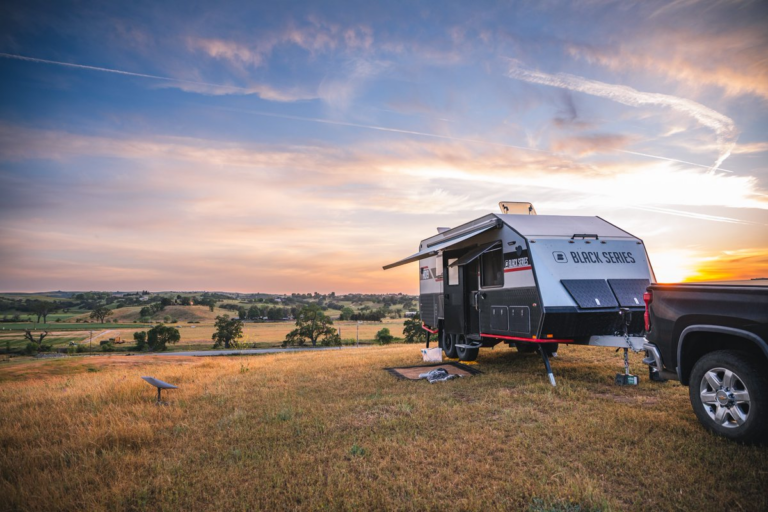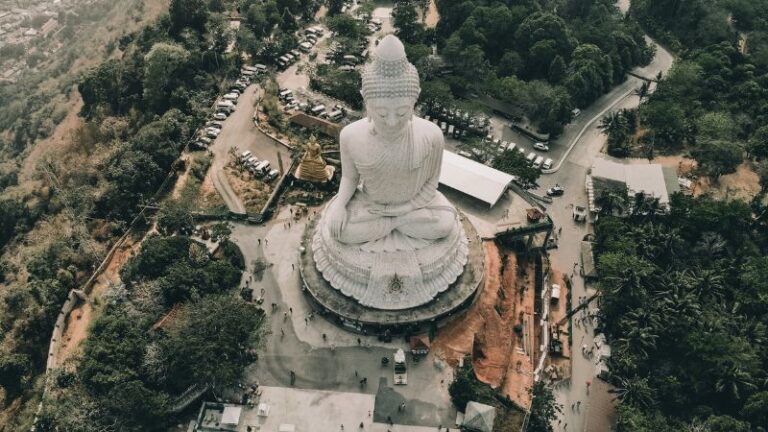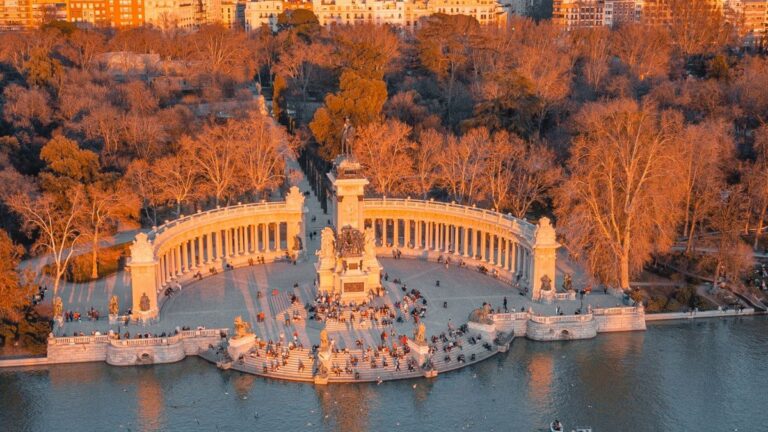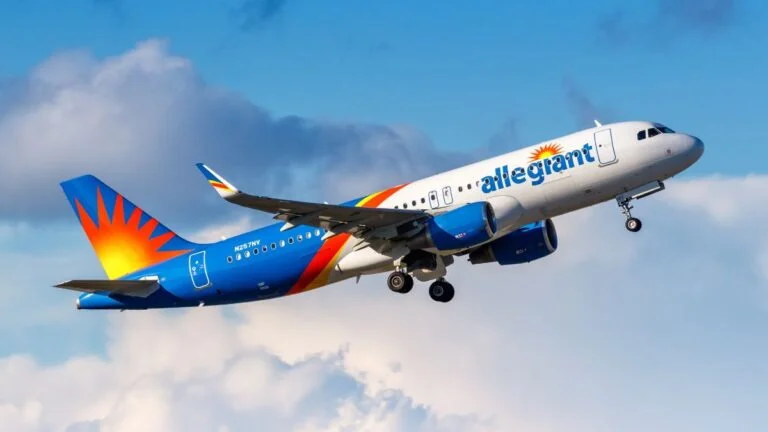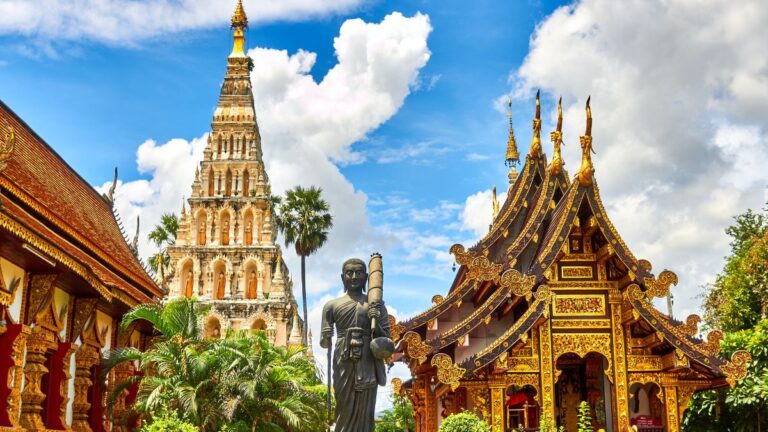50 Facts About Russia You Need to Know Before Traveling There
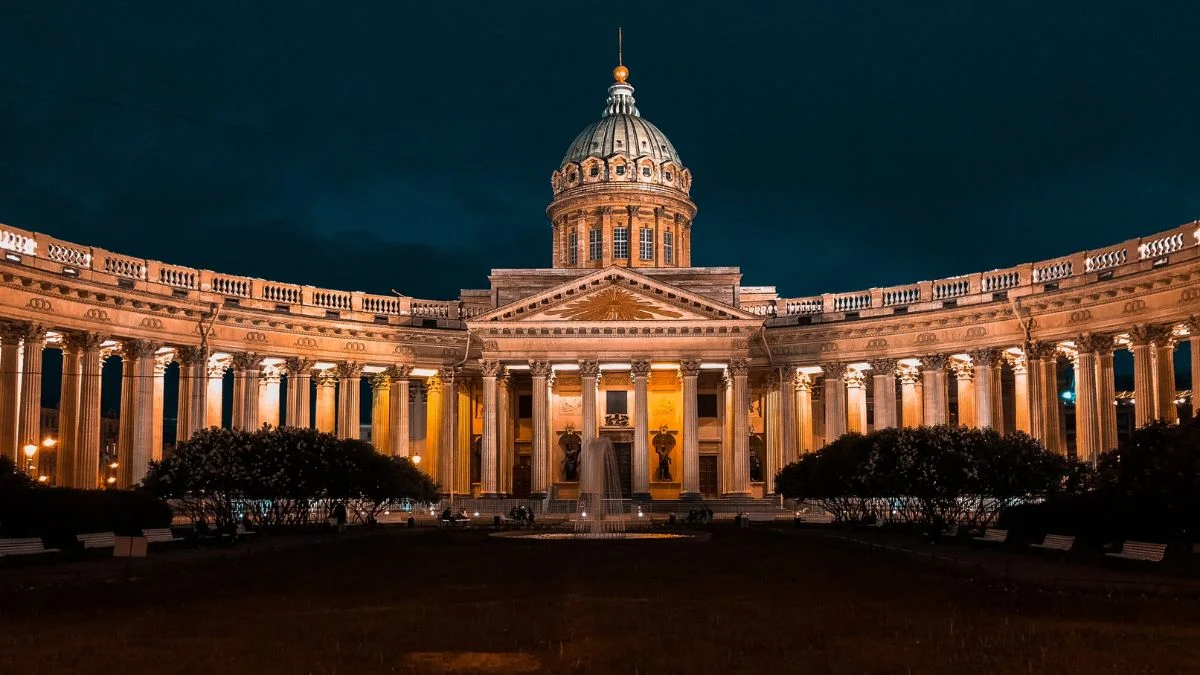
As participants in Amazon Associates and other programs, we earn from qualifying purchases. This comes at no additional cost to you. For more details, see our Affiliate Disclosure.
Diving into Russia is like exploring a vast treasure trove of history, culture, and natural beauty. Before you pack your bags for this enigmatic country, it pays to arm yourself with some intriguing facts. Russia is a land of contrasts, from its bustling, iconic cities like Moscow and St. Petersburg to the serene vastness of Siberia. It’s a place where you can marvel at ancient architecture one day and witness the untouched wilderness the next. To truly appreciate its depth, we’ve gathered 50 facts you should know. These tidbits will help you navigate the country’s rich traditions, complex history, and unique customs, making your trip an even more rewarding experience.
Russia is the Largest Country in the World
Russia’s sheer size is staggering, covering over 17 million square kilometers. This makes it by far the largest country in the world, spanning two continents, Europe and Asia. Its vast landscapes encompass a wide range of environments and climates, from the tundra of Siberia to the beaches of the Black Sea.
Home to the World’s Longest Railway
The Trans-Siberian Railway, stretching over 9,000 kilometers from Moscow to Vladivostok, holds the title of the world’s longest railway. It’s a key route that connects the Russian capital with the Far East, offering both locals and travelers a unique way to see the country.
Russians Celebrate Christmas on January 7th
Due to the Russian Orthodox Church using the Julian calendar, Christmas in Russia is celebrated on January 7th, rather than December 25th. This festive season is filled with traditions, family gatherings, and religious services, reflecting the country’s rich cultural heritage.
The Hermitage is One of the Largest Museums
The State Hermitage in St. Petersburg is one of the largest and oldest museums in the world, founded in 1764. Its collection includes over three million items, including the largest collection of paintings in the world. The museum’s buildings themselves, especially the Winter Palace, are architectural masterpieces.
Russia Has 11 Time Zones
Spanning from the Baltic Sea to the Pacific Ocean, Russia covers 11 time zones, the most of any country. This vast difference means when it’s morning in the west, it’s already evening in the east. Managing this requires a complex system of timekeeping and has significant implications for communication and travel.
Lake Baikal is the Deepest Lake
Situated in Siberia, Lake Baikal is the world’s deepest and oldest freshwater lake. It reaches depths of over 1,600 meters and is estimated to contain about 20% of the world’s unfrozen freshwater reserve. The lake is also known for its unique biodiversity, including many species found nowhere else on earth.
Russia’s Population is Over 144 Million
Despite its massive size, Russia’s population is relatively small in comparison, numbering over 144 million people. The majority of Russians live in the western part of the country, with Moscow being the most populous city. The country’s demographic landscape is diverse, with over 190 ethnic groups represented.
The Trans-Siberian Railway Spans 8 Time Zones
The Trans-Siberian Railway is not just the world’s longest railway but also crosses eight time zones from start to finish. It’s a journey that offers unparalleled views of Russia’s changing landscapes, from dense forests and mountain ranges to vast steppes.
Vodka is a Staple Russian Beverage
Vodka is more than just a drink in Russia; it’s a cultural icon. This clear spirit has been produced in the country since the 14th century and is a staple at celebrations and gatherings. Russian vodka is renowned worldwide for its quality and variety.
The Russian Language Uses the Cyrillic Alphabet
The Russian language, the most widely spoken Slavic language, utilizes the Cyrillic alphabet. This writing system was developed in the First Bulgarian Empire and later adapted by the Orthodox Slavic peoples. It consists of 33 letters, each with a unique sound.
Siberia Accounts for Over 75% of Russia’s Territory
Siberia, stretching from the Ural Mountains to the eastern coast, covers more than 75% of Russia’s territory. It’s known for its harsh climate, vast wilderness, and significant natural resources. Despite its size, Siberia is sparsely populated, with vast areas remaining wild and uninhabited.
The Double-Headed Eagle is a National Symbol
The double-headed eagle is a significant symbol in Russia, representing the country’s imperial past and its position between East and West. It has been used as a national emblem for centuries and can be seen on the coat of arms, symbolizing unity, power, and sovereignty.
Russia Has a “Window to Europe”
St. Petersburg is often referred to as Russia’s “Window to Europe.” Founded by Peter the Great in the early 18th century, the city was designed to open Russia to Western Europe and modernize the country. Its architecture and canals resemble those of European cities, making it uniquely beautiful.
The Bolshoi Theatre is a Historic Opera and Ballet House
The Bolshoi Theatre in Moscow is one of the most prestigious cultural institutions in the world. Known for its grand performances of opera and ballet, the Bolshoi has been a pillar of Russian culture and artistry since its opening in 1825. Its iconic neoclassical facade is a symbol of Russian artistic achievement.
The Russian Empire was the Third Largest Empire in History
At its peak, the Russian Empire was the third-largest empire in history, stretching over three continents. Established in the early 18th century, it lasted until the Russian Revolution in 1917. The empire played a significant role in global politics and was known for its military power and vast territories.
Moscow’s Metro is One of the Deepest in the World
Moscow’s Metro, besides being one of the busiest, is also among the deepest subway systems in the world. Its stations, some of which are over 70 meters underground, are famous for their elaborate decorations, including mosaics, sculptures, and chandeliers, making it a highlight of the city’s architecture.
Russia Hosted the 2018 FIFA World Cup
In 2018, Russia hosted the FIFA World Cup, showcasing the country on a global stage. It was a momentous event that brought together fans from around the world, highlighting Russia’s hospitality and its modern stadiums. The tournament was considered a success, with memorable matches and widespread celebrations.
The Country Has Over 40 National Parks
Russia’s commitment to preserving its natural landscapes is evident in its network of over 40 national parks. These parks protect a variety of ecosystems, from the Siberian taiga to the subtropical forests of the Caucasus. They offer a refuge for wildlife and a playground for nature lovers.
Russian Dolls or Matryoshka are Traditional Souvenirs
Matryoshka dolls, also known as Russian nesting dolls, are a popular souvenir and a symbol of Russian folk art. These wooden dolls, which open to reveal smaller dolls inside, are hand-painted with intricate designs that often reflect traditional Russian attire and themes.
The Aurora Borealis Can Be Seen in the Arctic Circle
One of nature’s most spectacular displays, the Aurora Borealis, or Northern Lights, can be observed in Russia’s Arctic Circle. The best time to witness this natural phenomenon is from September to March, when the nights are longest, offering a breathtaking spectacle of dancing lights.
Russia is Known for Its Iconic Onion Domes
The onion dome is a distinctive feature of Russian architecture, particularly visible in the country’s Orthodox churches. These bulbous domes, often brightly colored and gilded, are not just decorative but also have a practical purpose, shedding snow in the winter. They contribute to the iconic skyline of cities like Moscow and St. Petersburg.
Peter the Great Founded St. Petersburg
St. Petersburg was founded in 1703 by Peter the Great as Russia’s “Window to the West.” The city was intended to serve as a modern capital that could rival the great cities of Europe. With its network of canals, grandiose architecture, and cultural institutions, St. Petersburg remains a testament to Peter the Great’s vision.
The Country Was the First to Send a Man into Space
In 1961, Russia, then part of the Soviet Union, became the first country to send a man into space. Yuri Gagarin’s historic flight aboard Vostok 1 marked the beginning of human space exploration and remains a source of national pride. This achievement underscored the Soviet Union’s technological prowess during the Space Race.
Russian Cuisine Includes Dishes Like Borsch and Pelmeni
Russian cuisine is hearty and diverse, with dishes like borsch (beet soup) and pelmeni (dumplings) being staples. These traditional foods reflect Russia’s agricultural heritage and the need for nourishing meals to withstand the cold climate. Russian cuisine also features a variety of bread, fish, and pickled vegetables.
The Winter Palace Was Once the Official Residence of Russian Monarchs
The Winter Palace in St. Petersburg, part of the Hermitage Museum complex, served as the official residence of Russian monarchs. This opulent palace, with its striking green-and-white facade, is a masterpiece of Baroque architecture. It played a central role in Russian history, including the 1917 Revolution.
Russia Has the World’s Largest Forest Reserves
Russia is home to the world’s largest forest reserves, earning it the nickname “the lungs of Europe.” These vast forests, which cover much of Siberia, are crucial for biodiversity and play a key role in the global carbon cycle. They are home to countless species of flora and fauna, some of which are endemic to the region.
The Country is a Leader in Natural Gas and Oil Production
Russia is a global leader in the production of natural gas and oil, contributing significantly to the world’s energy supply. Its vast reserves have made it a key player in the international energy market. This wealth of natural resources has been central to Russia’s economy and its geopolitical influence.
The Russian Bear is a Common National Personification
The bear is a common symbol used to personify Russia, representing the country’s strength, endurance, and independence. This imagery has been used in political cartoons and propaganda, and the bear remains a prominent figure in Russian culture and folklore.
The Tsar Bell is the Largest Bell That Never Rang
The Tsar Bell, located in the Kremlin, is the largest bell in the world that never rang. Weighing over 200 tons, it was damaged during casting when a fire caused it to crack. Despite never fulfilling its purpose, the Tsar Bell is an impressive monument to Russian craftsmanship and ambition.
Fabergé Eggs are Among the Most Precious Russian Artifacts
Fabergé eggs, created by jeweler Peter Carl Fabergé for the Russian Tsars, are among the world’s most precious artifacts. These intricate, jewel-encrusted eggs were Easter gifts and are admired for their exquisite craftsmanship and beauty. They symbolize the opulence of the Russian Imperial Court.
The Kremlin is the Heart of Russian Politics
The Kremlin, a fortified complex in the heart of Moscow, has been the center of Russian political power for centuries. It houses the official residence of the President of Russia, as well as historic cathedrals and palaces. The Kremlin’s iconic walls and towers are symbols of Russia’s rich history and political authority.
Russia Has One of the World’s Largest Economies
Despite its challenges, Russia remains one of the world’s largest economies. Its wealth of natural resources, including oil, natural gas, and minerals, underpins this economic strength. Russia is also a significant player in global markets, from agriculture to technology and defense.
The Russian Ballet Has a Prestigious Global Reputation
The Russian ballet is renowned worldwide for its precision, elegance, and expressive performances. Companies like the Bolshoi Ballet and the Mariinsky Ballet have contributed to this prestigious reputation, producing many of the world’s greatest dancers and choreographers. The Russian ballet continues to enchant audiences with its timeless productions.
Tolstoy and Dostoevsky are Among Russia’s Famous Writers
Russia has produced some of the world’s most famous writers, including Leo Tolstoy and Fyodor Dostoevsky. Their works, such as “War and Peace” and “Crime and Punishment,” are celebrated for their deep psychological insight and exploration of philosophical themes. Russian literature has had a profound impact on global culture.
The Volga is the Longest River in Europe
The Volga River, stretching over 3,500 kilometers, is the longest river in Europe. It plays a crucial role in Russian history, culture, and economy, serving as a major navigable waterway. The Volga River Basin is home to a significant portion of Russia’s population and agricultural land.
Russia’s Coat of Arms Features a Golden Double-Headed Eagle
The coat of arms of Russia features a golden double-headed eagle, a symbol that dates back to the Byzantine Empire. This emblem represents the unity and sovereignty of the Russian state, with the eagle looking westward and eastward, signifying Russia’s geographic and cultural position between Europe and Asia.
The “Motherland Calls” Statue is One of the Tallest in the World
The “Motherland Calls” statue in Volgograd (formerly Stalingrad) is one of the tallest statues in the world. Erected in memory of the Battle of Stalingrad, it stands as a symbol of Russia’s resilience and sacrifice during World War II. The statue is a significant landmark and a source of national pride.
Russians Often Celebrate “Name Days” Instead of Birthdays
In Russia, “name days” – the feast days of saints after whom people are named – are often celebrated in addition to or instead of birthdays. This tradition, rooted in the Orthodox Christian calendar, offers another opportunity for friends and family to gather and celebrate.
The Moscow State University Building Was Once the Tallest in Europe
The main building of Moscow State University, built in the Stalinist style, was once the tallest building in Europe. Part of the Seven Sisters, a group of seven skyscrapers in Moscow designed in the Soviet era, it remains a prominent feature of the city’s skyline and a symbol of Russia’s academic achievements.
Siberian Tigers are the World’s Largest Wild Cats
The Siberian tiger, also known as the Amur tiger, is the world’s largest wild cat. Primarily found in the Russian Far East, these majestic animals are a conservation success story, with their numbers slowly recovering from the brink of extinction thanks to dedicated efforts to protect their habitat and combat poaching.
Russia is a Pioneer in Space Exploration
Russia’s contributions to space exploration are unmatched, beginning with the launch of Sputnik, the first artificial satellite, and the pioneering flight of Yuri Gagarin. The country’s space program continues to be a source of national pride and a significant player in international space exploration efforts.
The Country Boasts a Rich Tradition of Folk Music and Dance
Russian folk music and dance reflect the country’s diverse cultural heritage, featuring a variety of regional styles and instruments. From the lively balalaika to the soulful harmonies of Russian choirs, this tradition is a vibrant part of the national identity, celebrated at festivals and performances throughout the country.
The Russian Orthodox Church Influences Many National Traditions
The Russian Orthodox Church plays a significant role in the country’s cultural and spiritual life. Its traditions and rituals, from Easter celebrations to the blessing of waters at Epiphany, are interwoven with the fabric of Russian society, influencing everything from art and music to holidays and family life.
Russia’s Arctic Coastline is the Longest in the World
Russia’s Arctic coastline stretches for thousands of kilometers, making it the longest in the world. This remote and rugged region is home to unique wildlife, indigenous communities, and significant natural resources. It’s also at the forefront of research into climate change and Arctic navigation.
The Katun River in Siberia is Famous for Rafting
The Katun River in Siberia is renowned for its clear turquoise waters and thrilling rapids, making it a popular destination for rafting enthusiasts. The river flows through the picturesque Altai Mountains, offering stunning scenery and challenging adventures for those seeking to explore Russia’s wild side.
Russia Was the First Country to Create a Protected Nature Reserve
Russia was a pioneer in the conservation movement, establishing the world’s first nature reserve in 1916. This commitment to protecting natural landscapes and biodiversity continues today, with numerous reserves and national parks safeguarding the country’s environmental heritage.
The Russian Alphabet Has 33 Letters
The Russian alphabet, based on the Cyrillic script, consists of 33 letters. It includes unique sounds that are not found in the English language, making it a challenge for learners. However, its phonetic nature means that words are generally pronounced as they are spelled.
Samovars are Traditional Russian Tea-Making Devices
Samovars, traditional Russian tea-making devices, are a central part of the country’s tea culture. These metal urns, used to boil water and brew tea, are a symbol of hospitality and communal gatherings. Samovars vary in design from simple and functional to elaborate works of art.
The Ural Mountains Divide Europe and Asia
The Ural Mountains, stretching over 2,000 kilometers from the Arctic Ocean to the steppes of Kazakhstan, are considered the natural boundary between Europe and Asia. This mountain range is rich in minerals and has been a vital part of Russia’s mining industry for centuries.
Chess is a Popular Pastime in Russia
Chess has long been a popular pastime in Russia, with a strong tradition of excellence in the sport. The country has produced many of the world’s top players and champions, reflecting the importance of chess in Russian culture as a game of strategy and intellect.

